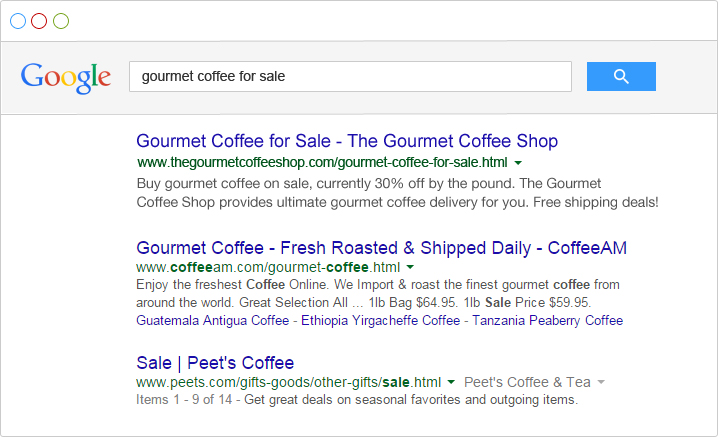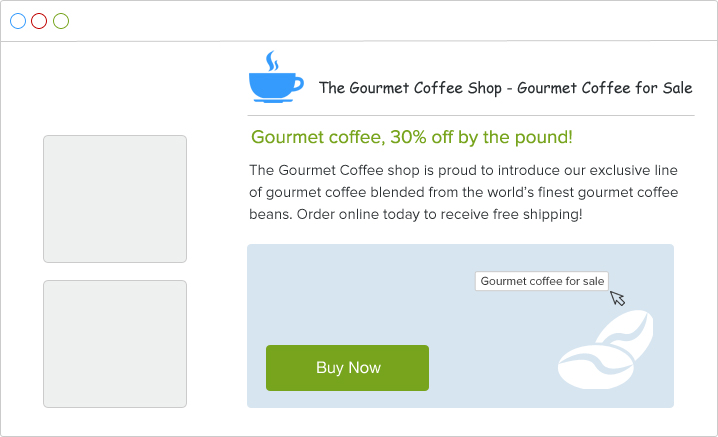
How To Improve Landing Page Experience
What is landing page experience?
According to Google:"Landing page experience refers to how good we think someone's experience will be when they get to your landing page (the webpage they end up on after clicking your ad). You can improve your landing page experience by: Providing relevant, useful, and original content.
Promoting transparency and fostering trustworthiness on your site (for example, by explaining your products or services before asking visitors to fill out forms sharing their own information). Making it easy for customers to navigate your site (including on mobile sites), and encouraging customers to spend time on your site (for example, by making sure your page loads quickly so people who click your ad don’t give up and leave your site prematurely).
Your landing page experience affects not only your Quality Score, but also your Ad Rank and advertising costs. Higher quality score will lower overall costs and improve Ad Rank."
How can you improve landing page experience?
Below you will find a few techniques that can help improve your landing page experience. Better landing page experiences can lead to a higher quality score that lowers advertising costs and achieves a higher Ad Rank. Making these improvements is just one of the simple ways you can improve your click through rate (CTR).
Adding to Google's statement above, landing page experience is related to the keywords used in PPC/Google Grant advertising. For the examples below we will use the keyword ‘Gourmet Coffee’ for our lovely made-up client, The Gourmet Coffee Shop.
Let's first learn what a "keyword on focus" is.
A "keyword on focus" is not necessarily one keyword; it is your ad group title. Each ad group has generally between 15-30 keywords, but each of those keywords should be in close variant to the ad group title, hence why it is called Keyword on Focus. Using our made-up client, The Gourmet Coffee Shop, we have a few examples of what keywords on focus would look like.
ad group titles:
gourmet coffee for sale
gourmet coffee maker
gourmet coffee beans
French gourmet coffee beans
There are four total ad groups. This means that there are four total keywords on focus. Keep reading below on what you'll be doing with each of these keywords on focus (ad group titles).
The keyword after the forward slash (slug).
A domain name is your website, like the one here for our made-up client: www.thegourmetcoffeeshop.com
We asked our friends at The Gourmet Coffee Shop to create a landing page for the ad group title (keyword on focus) ‘Gourmet Coffee for Sale’ and because they were on top of things, they were able to put it together in a good amount of time. But there was a problem! When they created the landing page, the wording after the forward slash (/) was incorrect.
It ended up looking like this: www.thegourmetcoffeeshop.com/gourmetcofeeforsale
There are two errors here that appear after the forward slash (/):
1) There is a typo and word "coffee" is misspelled.
2) The words should be separated by a dash (-): www.thegourmetcoffeeshop.com/gourmet-coffee-for-sale
These two errors will result in two problems:
1) This kind of typo will prevent the keyword "Gourmet Coffee" from matching your landing page.
2) Without the dash search engines will assume that ‘gourmet coffee for sale’ is only one word.
Your meta tags.
A meta tag is a special code that displays how your landing page looks to search engines (Google, Bing, etc.), as opposed to how it is visually displayed to users (people). Meta tags are composed of a meta title, which should be no lander than 67 characters, and a description, which should not exceed 155 characters. Both must match the keyword being used.
Let’s say you do a search for ‘Gourmet Coffee for Sale’ on Google (see below). The blue text is the meta title and the gray text underneath the title is the meta description.

Adding the keyword to your webpage.
Every webpage has a title that displays what the landing page is about. This main title is called an H1 tag. Your subtitles are considered H2, H3 tags and so forth. These tags must match your group titles and keywords on focus. We also want to add the keyword on focus to the landing page description around 5-7 times. This should be done naturally, without overstuffing keywords into your website. Make sure you have chosen the right keywords for your campaigns – this is crucial.
As shown below the H1 tag is ‘The Gourmet Coffee Shop – Gourmet Coffee for Sale’.
The description has the keyword ‘Gourmet Coffee’ a total of 3 times and a total of 6 times around the entire webpage. The H2 tag also contains the keyword on focus and reads ‘Gourmet coffee, 30% off by the pound’.

Adding the keyword to your images.
This does not mean to literally ad the word ‘Gourmet Coffee’ on to the image, but instead add the keyword on focus as the ‘alt’ tag. Search engines like Yahoo, Bing, and Google cannot technically see your image, so they read your image based on the ’alt’ tag that it’s provided. This is why when you move your mouse over an image a small pop up appears with the description of the image – that is the ‘alt’ tag.
Here is how an ‘alt’ tag looks in HTML coding: <img src=”gourmet-coffee.jpg” alt=”gourmet coffee for sale”>
Below is an example of what that would look like:

Your page load time (page speed).
Search engines like Yahoo, Bing, and Google factor in the speed of your page. The reason being is they don’t want a user to click on your ad and wait 3 minutes for your landing page to load – this leads users to click away and then you receive a poor experience on your website. Here are two simple ways to speed up your landing page:
1) Use compact image sizes and limit the overall amount of images being used. A great website to do this is www.compressor.io.
2) Limit the amount of coding. We understand that coding is important, but we recommend making it as clean as possible. Do not add widgets or pop ups to your landing page that are not necessary – this is by far the worst.
How many landing pages do you need?
This is by far the most important question when it comes down to PPC/Google Grant management. The answer: you’ll need a landing page for every ad group title (keyword on focus) you’re trying to advertise. If your ad groups (keyword on focus) were, for example: "gourmet coffee for sale", "gourmet coffee maker", and "gourmet coffee beans", then you should create one landing page for each ad group. If we added "French gourmet coffee beans" as the fourth ad group, then you should create a new landing page for that new ad group. The word "French" is highly specific to what a user is searching for and it should have its own landing page.
However, you should avoid having duplicate content with different keywords, as that can hurt your website and performance in search engines. In order to fix this problem, do not index the page, a process that we discuss in depth and can help you with, if you wanted to do some further reading.


.png)

